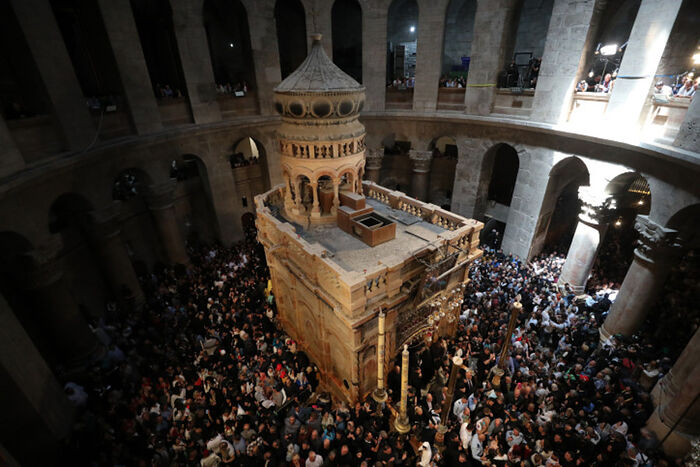CHURCH of the HOLY SEPULCHER, JERUSALEM, Israel – This week, Holy Week, is very special for Christians around the world. It’s when they commemorate the death, burial, and resurrection of Jesus as described in the New Testament. Recent discoveries at the Church of the Holy Sepulcher in Jerusalem’s Old City shed new light on what happened in Jerusalem 2,000 years ago.
The discoveries here occurred during a recent restoration around the tomb. That’s when excavators dug below the level of the original 4th-century memorial. Archaeologist Dr. Francesca Stasolla led the excavations.
“The excavation in the Church of the Holy Sepulchre has allowed us to rediscover the long history of Jerusalem,” Stasolla said. “The oldest evidence is related to a quarry from the Iron Age, and then the settlement sequence of the Roman city; the first Christianization of Jerusalem because of Emperor Constantine; the first monuments built in memory of the death of Christ; and finally, the entire architectural sequence up to the modern age.
One of their discoveries validates the gospel account in the Book of John, It describes Calvary and the site of Jesus’ burial being in the middle of a garden.
Stasolla recalled, “During the excavations, we noticed how the large quarry, as it was gradually abandoned, was used for burials according to Jewish custom. So there were rooms dug into the rock.
“At the same time,” she continued, “Some areas had terraces made with dry stone walls, and within these small spaces, we found traces of cultivation, paleobotanical analyses of pollen that revealed traces of cultivation. This data somehow echoes the Gospel of John, which speaks of vegetable gardens and gardens in the area of the venerated tomb and Calvary.”
Professor Stasolla observed that the excavations are like reading history itself.
“For me, the reconstruction of the historical sequence is very important, and digging is like reading a book and turning a page, only they are pages of earth. You turn one page at a time, and so the important thing is precisely this long story. It also becomes exciting to deal with such an important story, with a story told in this way, and with a story so felt by millions of people.”



